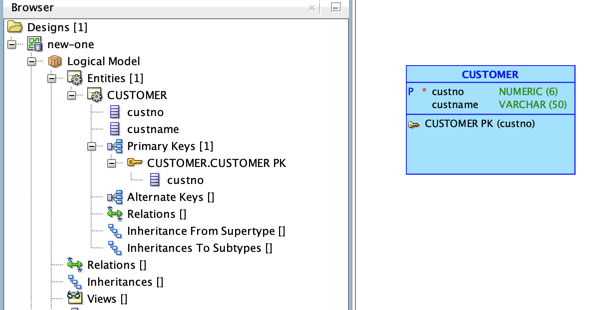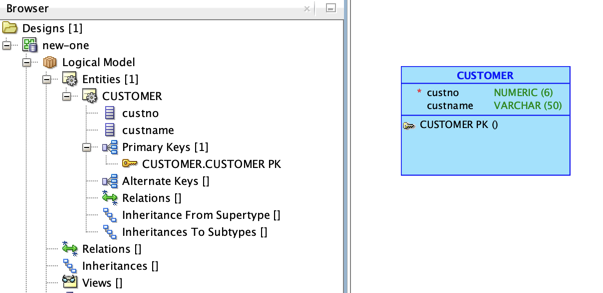There appears to be a problem with the Data Modeler embedded in the latest release of SQL Developer (19.1) - Oracle SQL Developer Data Modeler version 19.1.0.081.0911 - primary keys are lost on re-opening.
Create a basic model:

save, close and re-open - yields:

The PK has disappeared?
Lindsay.